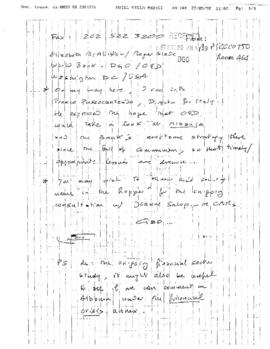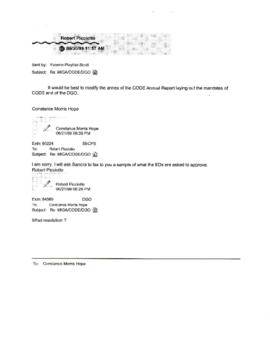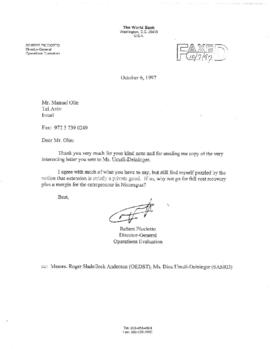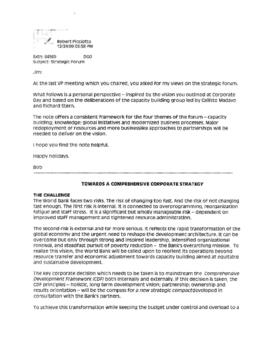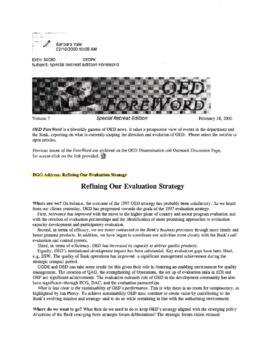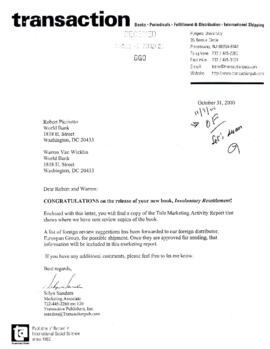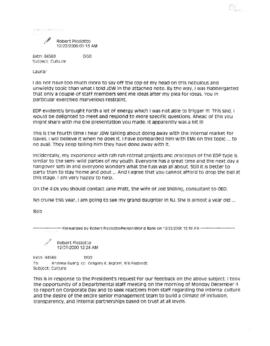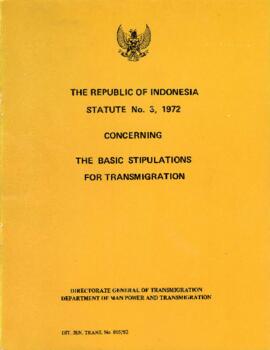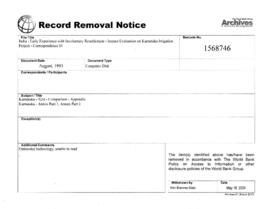Identity area
Reference code
Title
Date(s)
- 1957 - 2004 (predominant 1968 - 2004) (Creation)
Level of description
Fonds
Extent and medium
873.86 linear feet of textual records
Context area
Name of creator
Biographical history
Activities related to Bank operations evaluation began prior to the origin of the Operations Evaluation Department (OED), now known as the Independent Evaluation Group (IEG). In the late 1960s, a number of project reviews in the form of formal research and ad hoc analysis were undertaken. Aspects of the Programming and Budgeting Department (P&B) also focused on project evaluation and monitoring. However, with increased Bank lending and the introduction of new program initiatives, particularly in education, population, agriculture, and rural development, the need for an independent evaluation unit became evident and was addressed by the establishment of the Operations Evaluation Unit on September 2, 1970. The Unit, consisting of five individual staff members, was temporarily placed in the Programming and Budgeting Department and was tasked with assessing the usefulness of individual projects and the effects of groups of related projects in individual countries. The Unit was converted into the Operations Evaluation Division the following year.
In order to reduce the risk of actual or perceived conflict of interest for Bank management, it was soon decided that operations evaluation should be removed from P&B and set up as a separate entity under the charge of a vice president who would have no operational responsibilities. Effective July 1, 1973, the Operations Evaluation Division became the Operations Evaluation Department (OED). The Department was placed under the Joint Bank-IFC Audit Committee (JAC), which had been created in 1970 to supervise Bank and International Finance Corporation internal and external audit arrangements. Bank Vice President Mr. Mohamed Shoaib supervised the Department and Christopher R. Willoughby was appointed the first Director of the OED.
In 1973, a related development was initiated by the Bank's Vice President, Projects, which supported the OED's mandate. This related development was the requirement for all operating departments to prepare Project Completion Reports (PCRs), also referred to as Completion Reports, as the final step in the project cycle for lending operations. In these reports, projects were assessed generally in terms of: the extent to which they met their objectives; their economic and social impact; their impact on institution building; their completeness; their compliance with loan covenants and regulated agreements; and the involvement and influence of the Bank. These reports would then be evaluated as part of OED's new responsibilities.
OED was made responsible for conducting an audit of each completed project for submission to the Bank's executive board. Operating units produced PCRs which were forwarded to the new OED for audit. OED audit of the project could then result in changes or additions to the PCR. The OED audit produced the Project Performance Audit Report (PPAR) for submission to the executive board. The PPAR provided an evaluation of the extent to which project objectives stated in the lending documents were achieved and the general effectiveness and efficiency of the lending operation. While initially all projects were to be audited by the OED, the percentage of projects given full audits would decrease over the years.
PCRs, PPARs, and other Bank study reports would also serve as the basis for different types of special evaluation studies generated by the OED, which focused on a variety of broader topics, including countries, sectors, Bank processes and policies, and broad themes as identified by management, operations staff, and OED staff.
Efforts to further institutionalize the Department's independence led to President McNamara's proposal in 1974 of a new organizational position for the Department and a new managerial head: Director-General, Operations Evaluation (DGO), with rank of vice president. In 1975, Mervyn L. Weiner was appointed by the Executive Directors as the OED's first DGO. It was determined at this time that the OED would report directly to the Board with an administrative link to the President. OED's functions at this time included:
-
making periodical assessments of the Bank's operations evaluation system;
-
carrying out performance audits of completed projects supported by the Bank;
-
encouraging member countries to establish their own operations evaluation systems;
-
assessing actions taken by the Bank in connection with OED's findings; and
-
assisting in the dissemination of evaluation findings within the Bank and the development community.
On September 26, 1975, the first Annual Review of Project Performance Audit Results was released by OED. Including audits for fifty projects, it provided a summary of PPAR results and a relatively brief but comprehensive scorecard of the performance of completed Bank-assisted projects. It also highlighted lessons, ideas, and themes identified over the previous year. The annual review would be renamed a number of times: Annual Review of Project Performance Results in 1985; Annual Review of Evaluation Results in 1989; and Annual Review of Development Effectiveness in 1997.
Another form of evaluation was undertaken by the OED in 1979. The Impact Evaluation Report (IER) was designed as a second look at a project taken about five years after its completion. It assessed the effect of the project, both intentional and unintentional, on people and the environment as well as the sustainability of the implementing organization.
As OED's responsibilities for the creation of evaluation products increased through the 1970s and into the 1980s, corresponding changes in organization and staffing occurred. The number of senior evaluation officers continued to increase. By 1981/1982 each senior evaluator was assigned a specific sector or area of responsibility (public utilities, industry, development finance companies/corporation [DFCs], structural adjustment and program loans, agriculture, education and training, transport and tourism, and policy review). In 1983, three chief evaluation officer positions were created and each was assigned sector-specific divisions. Divisions at this time were simply referredto as Division 1, Division 2, and Division 3. By November 1985, the division's assignments were reflected in division titles: Division 1, Agriculture and Human Resources; Division 2, Industry and Policy Review; and Division 3, Infrastructure and Urban Development. This arrangement remained in place through September 1987.
OED was reduced to two divisions from September 1987 to July 1991: Division 1, Agriculture, Infrastructure and Human Resources, and; Division 2, Policy-Based Lending, Industry, Public Utilities and Urban Sectors. From 1991 to May 1997 OED was again re-organized into three divisions: Agriculture and Human Development (OEDD1), Country Policy, Industry and Finance (OEDD2), and Infrastructure and Energy Division (OEDD3).
In 1994, the Committee on Development Effectiveness (CODE) was created as a standing committee of the Board of Executive Directors and would serve as a replacement for the JAC. The eight-member committee was made responsible for overseeing the operations evaluation systems ofthe Bank (IBRD and IDA) and of the IFC.
That same year, OED began to offer a new product, Country Assistance Reviews (CARs), which provided countrywide impact evaluations that concentrated on the overall impact and development effectiveness of the Bank's whole program of assistance to a country over a number of years. Country assistance evaluations represented a shift in the Bank's and OED's focus. When OED was established, the Bank was essentially dealing with investment lending, and the project was the appropriate evaluation unit to assess Bank performance. By the 1990s, the situation had changed. With the growing recognition of the importance of a country's policy environment, the Bank was giving greater attention to a whole country strategy. Country Assistance Strategies (CASs), which outlined the Bank's program in a country for the next several years, became a central focus of Bank-client dialogue. OED responded to this new country focus by shifting from the project to the country as the basic unit of evaluation.
In 1995, the IFC's Operations Evaluation Unit was reorganized as a department, the Operations Evaluation Group (OEG), to provide for increased attention to the development impact of IFC operations. In addition, OEG began to transmit its report to the Board through the DGO.
The emerging emphasis on country and thematic evaluation and renewed emphasis on evaluation capacity and knowledge dissemination resulted in another organizational restructuring in 1997. In June of that year, the Department was divided into four component parts: Corporate Evaluation and Methods (OEDCM), Country Evaluation and Regional Relations (OEDCR), Sector and Thematic Evaluation (OEDST), and Partnership and Knowledge Program (OEDPK).
In January of 2002, the World Bank Group's Multilateral Investment Guarantee Agency (MIGA) created its own evaluation office. As with the IFC's OEG, it also began transmitting reports to the Board through the OED's DGO.
In December 2005, the OED changed its official name to the Independent Evaluation Group (IEG) to better reflect its three components: the Independent Evaluation Group (Bank) (IEGB), Independent Evaluation Group (IFC) (IEGI), and Independent Evaluation Group (MIGA) (IEGM). In 2008 or later, another reorganization took place. The resultant divisions were: Public Sector Evaluation (IEGPS); Private Sector Evaluation (IEGPE); Country, Corporate Global Evaluation (IEGCC); and Strategy, Learning and Communication (IEGCS).
Repository
Archival history
Immediate source of acquisition or transfer
Records were transferred directly from Department units to the Archives using approved records retention and disposition schedules.
Content and structure area
Scope and content
Fonds consists of records related to activities undertaken by the Operations Evaluation Department in support of its function as the Bank's independent operations evaluator. The majority of the records in this fonds are working files for project evaluations (Project Performance Audit Reports [PPARs] or Performance Audit Reports [PARs]) produced by the OED; these files are generally accompanied by Project Completion Reports (PCRs) or Implementation Completion Reports (ICRs) that were produced by operations departments and submitted to the OED. Working files for other OED evaluation products include: Impact Evaluation Reports (IERs); Country Assistance Reviews (CARs); Country Assistance Notes (CANs); Country Assistance Evaluations (CAEs); and special evaluation studies. Records related to annual reviews of Department evaluations are also included as are records related to Department annual reports. Publication files for OED periodicals, OED Processes, and Lessons & Practices are also included.
The fonds also consists of records created and received by the Department's Directors-General (DGO), Directors (OEDDR), and division directors. These records generally relate to: policy and procedure development; reporting; Department, Bank, and external projects, committees, and commissions; communications and dissemination of reports; operations management; and Department administration.
Appraisal, destruction and scheduling
Accruals
System of arrangement
Conditions of access and use area
Conditions governing access
Records are subject to the Internal Evaluation Group's Access to Information Policy.
Conditions governing reproduction
Records are subject to the Copyright Policy of the World Bank Group.
Language of material
Script of material
Language and script notes
Physical characteristics and technical requirements
Finding aids
Allied materials area
Existence and location of originals
Existence and location of copies
Related units of description
Notes area
Alternative identifier(s)
Access points
Subject access points
Place access points
Name access points
Genre access points
Description control area
Description identifier
Institution identifier
Rules and/or conventions used
Internal World Bank Group Archives rules based on ISAD(G).
Disclosure status
Level of detail
Dates of creation revision deletion
12 April 2012


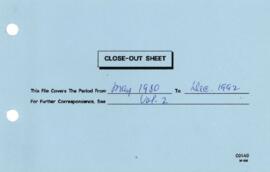
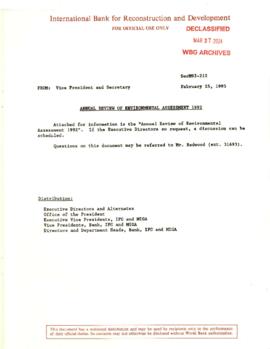

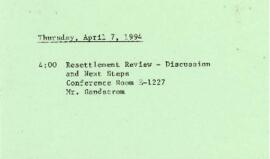



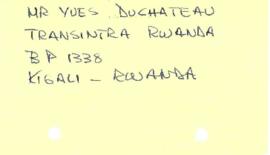


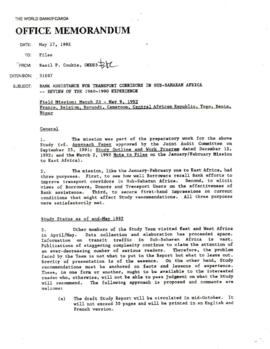
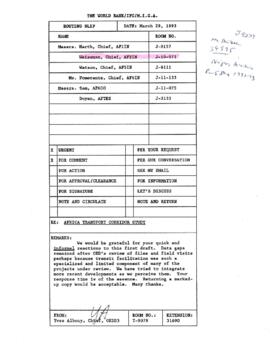

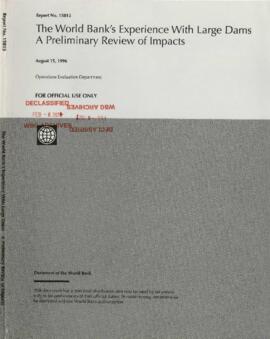

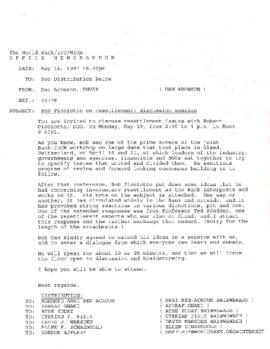
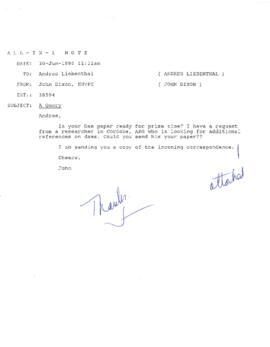
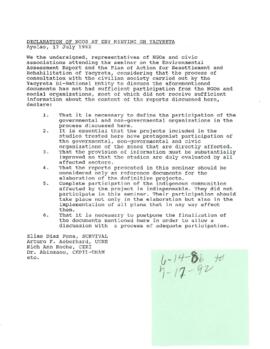
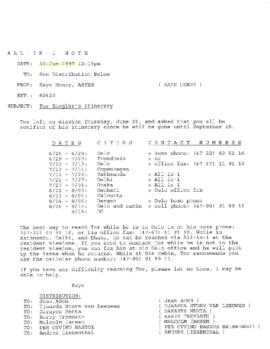


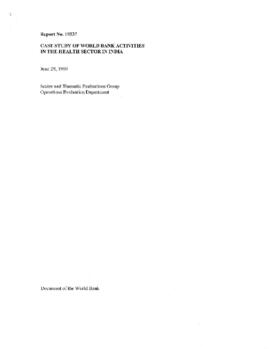

![Implementation Completion Studies Audit Files - Study of Non-Governmental Organizations [NGO] - S...](/uploads/r/world-bank-group-archives/c/2/f/c2ffae73344563f5d9eab3752e00b29b3519d388fda93200a12a984575854613/WorldBankGroupArchivesfolder1852020_142.jpg)
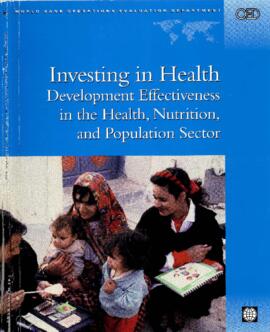
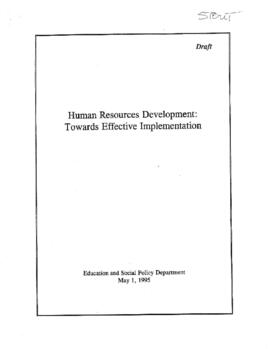
![Non-Governmental Organizations [NGO] - Involvement In Bank Supported Projects - Special Operation...](/uploads/r/world-bank-group-archives/b/f/a/bfa697129cdb218ae6975947a9fc18d917be1ddb938d2415e43d405e6e062318/WorldBankGroupArchivesFolder1687547_142.jpg)


![Director General Operations [DGO] - OEDDR - Shared Unit Files - External Affairs - Organizations ...](/uploads/r/world-bank-group-archives/f/1/8/f18ffb951da6eb2ae070ffa6bb91e0197b9b0fa6db32be9f2c19b3c986aea73b/WorldBankGroupArchivesFolder1771473_142.jpg)
![Director General Operations [DGO] - OEDDR - Shared Unit Files - External Affairs - Organizations ...](/uploads/r/world-bank-group-archives/7/6/e/76efcd0d0c404b8aff22db35208c62a036468ce2d8a4496cc74c11cc40be4a17/WorldBankGroupArchivesFolder1738422_142.jpg)

